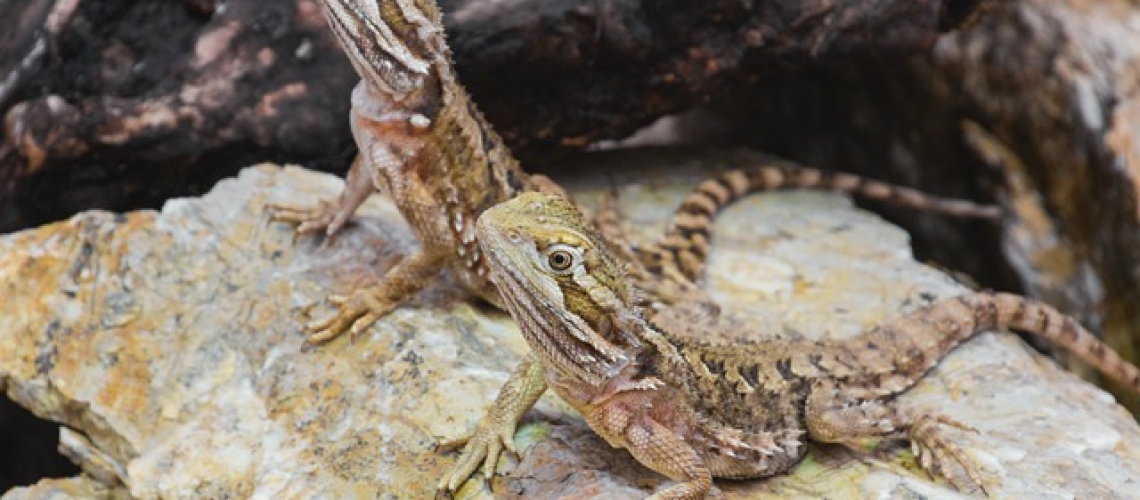Do you have a bearded dragon? Are you unsure about what’s normal and abnormal when it comes to their urination? Don’t worry, you’re not alone. Learn how to decode your beardie’s pee habits with this helpful guide.
We’ll cover the basics of analyzing color, frequency, and volume, as well as how to spot and treat urinary issues.
Plus, learn why veterinary care is so important for urinary problems in bearded dragons.
Key Takeaways
- Bearded dragon urine can range from light yellow to dark orange-brown.
- Changes in urine color, frequency, and volume may indicate urinary problems.
- Regularly monitoring urination habits can help identify problems early.
- Consulting a vet is important for diagnosing and treating urinary issues.
Bearded Dragon Urine: What to Expect
Bearded dragon urine can vary in color, frequency, and consistency, so it’s important to know what to expect.
Urine can range from light yellow to a dark orange-brown color, and be passed either frequently or infrequently depending on the type of substrate they are kept on and their diet.
Stool consistency can also change depending on the food they have eaten.
Knowing what is normal for your dragon will help you determine if something is amiss with their health.
Pay attention to their behavior, diet, and the substrate type for any changes in urination habits.
Analyzing Color, Frequency, & Volume
You’ll want to pay special attention to the color, frequency, and volume of your pet’s urination as this can provide useful clues about their health. Urine consistency and hydration levels are key indicators of a bearded dragon’s overall health. It should be clear with no signs of sediment or particles.
Tinted yellow is normal for healthy lizards, while deep yellow or orange may indicate dehydration. The amount and frequency varies from one bearded dragon to another; however, it should generally increase when they’re hydrated and decrease when dehydrated.
Monitoring these factors often can help you determine if any medical issues are present early on!
Urine Problems in Bearded Dragons
If you notice any changes in the color, frequency, and volume of your pet’s urine, it could be a sign of a medical issue. Poor gut health or an unbalanced diet can cause issues like discoloration and reduced urination.
If left unchecked these problems may worsen, so it’s important to pay attention to your bearded dragon’s habits. Paying close attention to dietary balance and gut health is key for keeping your pet healthy and happy.
Treating Urinary Issues in Bearded Dragons
It’s important to consult a vet if your pet shows signs of urinary issues, as they can help diagnose causes and determine the best course of treatment. Diet changes, such as increasing water intake or reducing calcium, may be recommended. Other treatments could include antibiotics for infections or fluids to counteract dehydration.
Depending on the severity of the issue, hospitalization and surgery may be necessary. If you feel comfortable with home treatment, always research thoroughly before trying anything new.
Give freedom back to your furry friend by exploring all available options to keep them healthy.
The Importance of Veterinary Care for Urinary Issues
Visiting a vet is essential for accurately diagnosing and effectively treating urinary issues in pets. Dietary changes, environmental stress, and other factors can all contribute to urinary problems in bearded dragons.
Knowing when to take your pet to the vet is key; don’t wait until symptoms become severe or potentially irreversible. Veterinary care ensures that your bearded dragon gets the appropriate diagnosis and treatment needed to help them live a healthy life.
Frequently Asked Questions
How Can I Tell if My Bearded Dragon Is Having Urinary Issues?
Recognize signs of urinary issues in your bearded dragon such as decreased appetite, lethargy and discolored urine. Take preventative measures like providing clean water and nutritious food to keep them healthy. Be alert for any changes that could indicate a problem.
Is There Any Way to Prevent Urinary Issues in Bearded Dragons?
You can help prevent urinary issues in bearded dragons with dietary changes and environmental factors. Make sure they get enough calcium, vitamins, and minerals. Provide a habitat with the right temperature, lighting, and humidity levels. Monitor their water intake too!
How Often Should I Expect My Bearded Dragon to Urinate?
Expect your bearded dragon to urinate a few times per week. Monitor urine color, bladder health, drinking habits, stress levels and temperature control for any potential issues. Keeping careful track of these factors will help your pet stay healthy.
What Is the Best Diet for Bearded Dragons to Maintain Good Urinary Health?
For good urinary health, provide your bearded dragon a grain-free diet and plenty of water. Offer fresh vegetables, insects, and occasional fruits to ensure they get all the nutrients they need. Drinking enough water is essential for their health. Monitor consumption and adjust as needed!
How Do I Know When to Take My Bearded Dragon to the Veterinarian?
Recognize symptoms and seek urgent care if necessary. Look out for changes in eating habits, urination frequency, or signs of distress. Be aware that a vet visit may be necessary if these behaviors persist. Take action quickly for the best outcome.
Conclusion
Bearded dragon urination can be confusing, but understanding what’s normal and abnormal is key to keeping your pet healthy.
Remember that any changes in frequency, volume, or color should be checked out by a vet right away.
With proper care and veterinary intervention when necessary, you can ensure your bearded dragon has a long and happy life.






